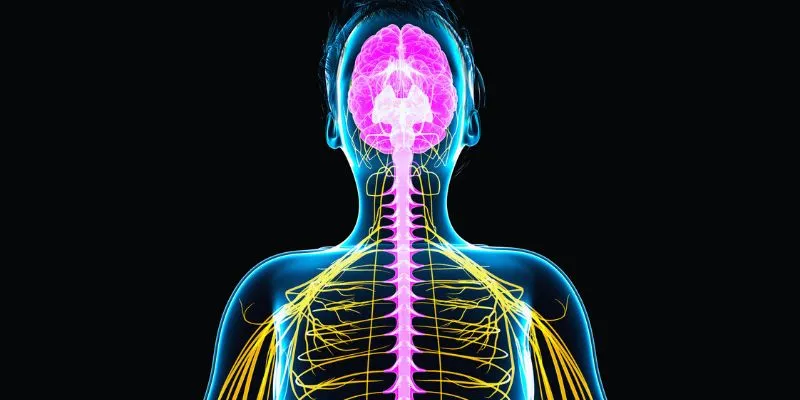Migraine and Weather Changes: What’s the Link?
Environmental factors are one trigger of the complex neurological attacks known as migraines. Among these, weather changes are often significant but underestimated causes. Barometric pressure fluctuations, rapid temperature shifts, and increased humidity levels disrupt physiological balance, leading to migraines.
Scientific studies indicate that changes in brain chemistry, particularly serotonin levels, occur during weather changes. These fluctuations affect blood vessels and nerve activity, producing the throbbing pain associated with migraines. Identifying this connection is vital to mitigating their occurrence and developing effective coping mechanisms. Explore the following insights and practical tips to better manage weather-induced migraines and reclaim control over your well-being.
Why Weather Changes Trigger Migraines
- Barometric Pressure Fluctuations:
One of the primary weather-related migraine triggers is fluctuations in barometric pressure. A sharp drop, which often occurs before or during storms, can lead to significant changes in pressure within the sinuses and brain. This change in pressure causes blood vessels in the brain to expand or contract irregularly, disrupting the brain’s normal functioning and potentially triggering intense migraine pain.
- Temperature Extremes:
Both extremely hot and cold weather can trigger migraines. During heatwaves, dehydration becomes a common issue, and dehydration is a well-known migraine trigger. Conversely, in colder weather, blood vessels constrict, reducing oxygen and blood flow to the brain, which can also provoke pain. These changes can be particularly challenging for individuals with sensitivity to temperature extremes.
- Seasonal Changes:
With each season, different weather patterns emerge that can affect migraine sufferers. For instance, seasonal changes can disrupt sleep schedules due to changes in sunlight exposure and daylight-saving time. Additionally, spring and fall can bring more allergens like pollen or dust, heightening the likelihood of sinus irritation, which may trigger a migraine attack. These changes can also contribute to disruptions in the body’s circadian rhythms, making seasonal transitions difficult for some people.
- Air Quality and Allergens:
Weather changes often increase allergens, such as pollen, mold, and dust, which are more prevalent during certain times of the year, particularly in spring and autumn. These allergens can exacerbate sinus pressure, cause inflammation, and lead to headaches or migraines.
Symptoms of Weather-Induced Migraines
- Headache:
A classic symptom of weather-related migraines is a severe throbbing or pulsating headache, often localized to one side of the head. This pain tends to intensify with physical activity and can last from a few hours to several days.
- Sensitivity to External Stimuli:
Bright lights, loud noises, and strong odors can exacerbate migraine symptoms. For many migraine sufferers, these external stimuli make the pain more unbearable. This hypersensitivity is common in weather-triggered migraines, where environmental factors, like changes in light or temperature, heighten the migraine experience.
- Aura Symptoms:
Aura symptoms often precede a migraine attack and may include visual disturbances, such as flashing lights or blind spots. These symptoms act as a warning sign that a migraine is imminent, giving individuals time to take preventive action.
- Nausea and Dizziness:
In addition to head pain, weather-induced migraines often cause symptoms like nausea, vomiting, and dizziness. These symptoms make it challenging to perform normal daily activities, as the body is overwhelmed by the migraine’s intensity.

Practical Strategies for Preventing Weather-Triggered Migraines
- Monitor Weather Patterns:
Using weather apps to track barometric pressure, temperature changes, and humidity levels can help individuals stay ahead of potential migraine triggers. By anticipating upcoming weather changes, migraine sufferers can take steps to minimize exposure or prepare their bodies for the impending weather shifts. For example, when a sudden storm is predicted, people can increase hydration and avoid strenuous outdoor activities.
- Stay Hydrated:
Adequate hydration is critical for preventing dehydration-induced migraines, especially during hot weather. Drinking sufficient water throughout the day—aiming for 2 to 3 liters daily—can help maintain hydration levels. For added benefit during heat waves or after physical exertion, incorporating electrolyte-rich beverages can further support hydration and prevent migraines.

- Maintain a Stable Indoor Environment:
Creating a comfortable environment indoors can help mitigate the effects of extreme weather. Air conditioners, heaters, and humidifiers can maintain a stable temperature and humidity level, helping prevent sinus irritation and discomfort caused by dry or overly humid air.
- Manage Stress Levels:
Migraine attacks are often exacerbated by stress, and when weather changes also create discomfort, the stress level can significantly increase. Techniques such as deep breathing exercises, yoga, or meditation can help manage stress and reduce the frequency of migraines. Regular physical exercise, including low-impact activities like walking or swimming, is also helpful for stress reduction and overall migraine prevention.
- Establish a Routine:
Maintaining a consistent sleep schedule and diet is vital in migraine prevention. Hormonal fluctuations, disrupted sleep patterns, and erratic eating habits can all contribute to migraines, especially during seasonal transitions. Keeping a routine helps stabilize the body’s internal processes, making it more resilient to environmental changes.
Long-Term Strategies for Migraine Management
- Keep a Migraine Journal:
A migraine journal is invaluable for identifying specific triggers, including weather-related ones. Individuals can pinpoint recurring triggers by tracking migraines alongside changes in weather patterns, diet, stress levels, and sleep habits. This journal can also help individuals recognize early warning signs, allowing for earlier intervention and treatment.
- Consult a Healthcare Provider:
For individuals with chronic migraines, consulting a healthcare provider is crucial. Neurologists can offer tailored treatment plans, including medications like beta-blockers, anti-seizure drugs, or triptans. These medications can reduce the frequency and severity of migraines, especially when combined with lifestyle modifications.
- Incorporate Supplements:
Certain supplements, such as magnesium, riboflavin (vitamin B2), and CoQ10, reduce migraine frequency in some individuals. These nutrients help maintain proper neurological function and may be a preventive measure when taken regularly.
Conclusion
Weather changes are unavoidable, but their impact on migraines can be managed with the right strategies. By staying informed, practicing preventative measures, and consulting healthcare professionals, individuals can significantly reduce the frequency and intensity of weather-induced migraines.
Take control of your well-being today by recognizing your triggers, implementing practical prevention techniques, and seeking tailored medical advice. With dedication and a proactive approach, you can reduce the disruption caused by migraines and live a more comfortable, pain-free life.
SEO Enhancements: - Optimized usage of keywords like “weather changes and migraines” throughout the article to improve search visibility. - Improved meta description and keywords for concise and targeted SEO impact. Clarity and Readability Improvements: - Added subheadings for better content organization and easier navigation. - Used bullet points and lists to break down complex information. - Simplified language and structure for enhanced readability. - Highlighted important terms for emphasis and clarity.











